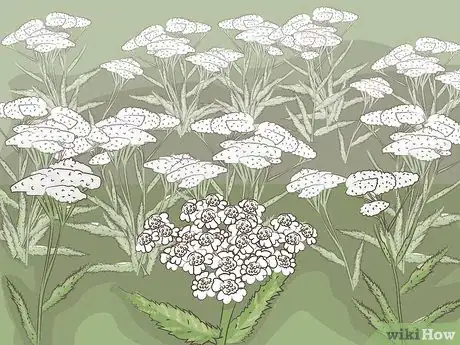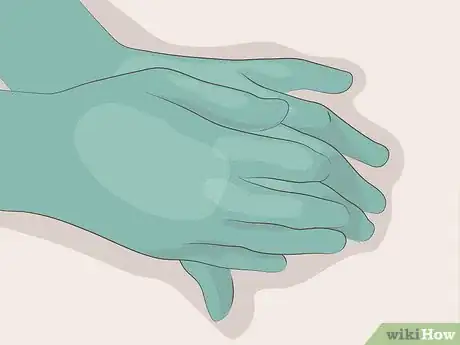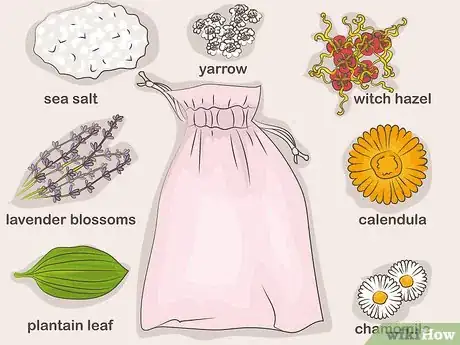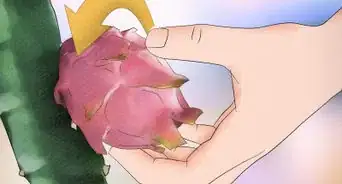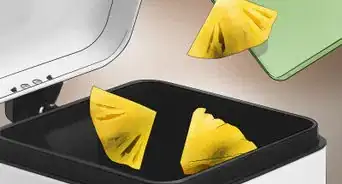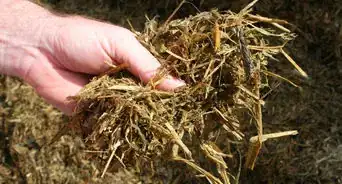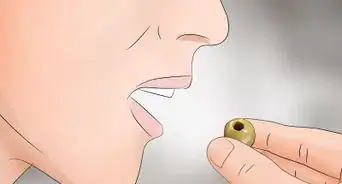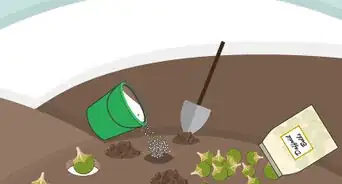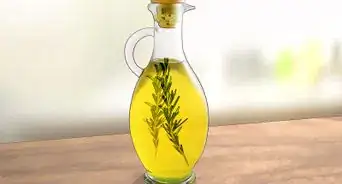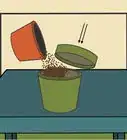This article was co-authored by wikiHow staff writer, Jessica Gibson. Jessica Gibson is a Writer and Editor who's been with wikiHow since 2014. After completing a year of art studies at the Emily Carr University in Vancouver, she graduated from Columbia College with a BA in History. Jessica also completed an MA in History from The University of Oregon in 2013.
This article has been viewed 28,824 times.
Learn more...
If you're growing yarrow or stumble onto a wild patch of the herb, you should learn how to gather it. It's a good idea to wait until the yarrow is in full bloom so it has more of its spicy fragrance. Use pruning shears to cut the stalk a few inches above the soil. Then you can use the stalk, leaves, and flowers that you harvested. Many herbalists use yarrow for its anti-inflammatory and pain relieving properties.
Steps
Gathering Yarrow
-
1Locate and identify yarrow. You can find yarrow in a variety of soils. It thrives in lawns, meadows, riverbeds, and fields. Look for stalks that reach 1 to 3 feet (0.3 to 0.9 m) high with fern-like blossoms. During the summer, the heads of yarrow will flower into white or yellow blooms. Each yarrow head will have a few clusters of flowers.[1]
- Yarrow looks similar to Queen Anne's lace, but yarrow flowers don't spread as widely as the flowers of Queen Anne's lace. Yarrow also lacks the center spot that Queen Anne's lace has.
-
2Plan to harvest yarrow when it blooms in the summer. Pay attention to when the stalks of yarrow put on buds and wait a few weeks for the buds to open. Most yarrow plants in the northern part of the U.S. bloom between July and September while southern yarrow blooms between late-April and June.[2]
- If you're unsure when the yarrow in your area will bloom, watch for the buds. They should bloom within a few weeks.
Advertisement -
3Check the yarrow flowers before you harvest. Once the white flowers have completely opened on the yarrow plants, pluck off a few leaves with your fingers. Rub the leaves in the palms of your hand and then smell. If you smell a rich, spicy fragrance, the yarrow is ready to harvest.[3]
- If you can't smell anything, wait a few days and then check again.
-
4Gather the yarrow late in the morning. Wait for the morning dew to dry so the plant isn't wet. It can also help to harvest on a sunny day since the moisture will evaporate faster.[4]
-
5Wear gloves to protect your hands from contact dermatitis. Although it's rare, some people develop an allergic reaction from handling the yarrow plant, especially when harvesting large quantities. To prevent skin irritation and redness, wear a pair of gardening gloves to harvest the yarrow.[5]
- It's also a good idea to wash your hands after harvesting and handling the yarrow.
-
6Use pruning shears to cut the yarrow 2 in (5 cm) above the ground. If you want to cut a single stalk or 2, take clean pruning shears and cut the yarrow stalk 2 in (5 cm) above the soil. If you'd like to harvest several stalks, gather them together in the palm of 1 of your hands. Use the pruning shears in your other hand to cut the yarrow near the ground.[6]
- You can harvest up to 10 stalks at a time by gathering them together.
- Use the leaves, flowers, stems, and roots of the plant.
Using Harvested Yarrow
-
1Brew yarrow tea to relieve nausea, headache, and fever. Pour 1 cup (240 ml) of boiling water into a mug with 1 tablespoon (1 g) of fresh, chopped yarrow flowers or 1 teaspoon (1 g) of dried flowers. Steep the tea for 10 to 15 minutes and then strain the tea. Sip it slowly and drink up to 3 cups every day.[7]
- If you'd like to adjust the flavor of the tea, stir in honey or agave syrup and add lemon slices.
-
2Mix a yarrow tincture to use in compresses, lotions, or salves. Pour 5 ounces (147 ml) of alcohol that's at least 80-proof into a glass container. Stir in 1 ounce (28 g) of dried yarrow and put the lid on the container. Let the tincture infuse for 6 to 8 weeks and then strain it.[8]
- Store the tincture in a dark bottle so light won't damage it. Tinctures can last several years when prepared properly.
-
3Create an herbal bath for menstrual or postpartum relief. Yarrow can relieve common menstrual pains and provide relief after childbirth. Mix yarrow with other herbs and fill a muslin or cotton bag with the combination. Then run a bath with hot water and add the bag of herbs. Soak in the tub for 20 minutes. For 1 bath, mix together:[9]
- 1/4 cup (59 g) of sea salt
- 0.5 ounces (14 g) of lavender blossoms
- 0.5 ounces (14 g) of plantain leaf
- 0.5 ounces (14 g) of witch hazel
- 0.5 ounces (14 g) of yarrow
- 0.5 ounces (14 g) of calendula
- 0.5 ounces (14 g) of chamomile
Community Q&A
-
QuestionIf you're just using the flowers, why cut so low on the stem?
 ChrisTop AnswererNot only can you use the flowers, you can also use the stalk and leaves. While just the flowers may be used in tea, there are a variety of other uses for other parts of the plant.
ChrisTop AnswererNot only can you use the flowers, you can also use the stalk and leaves. While just the flowers may be used in tea, there are a variety of other uses for other parts of the plant.
Warnings
- Avoid using yarrow if you're pregnant or breastfeeding.⧼thumbs_response⧽
Things You'll Need
Gathering Yarrow
- Gardening gloves
- Pruning shears
Using Harvested Yarrow
- Mug
- Tea strainer
- Dark bottle
- Glass bottle with lid
- Bowl
- Spoon
- Muslin or cotton bag
References
- ↑ http://www.ediblewildfood.com/common-yarrow.aspx
- ↑ https://www.heirloomgardener.com/plant-profile/medicinal/how-to-grow-forage-and-use-yarrow-zbspz1702zkin/
- ↑ http://blog.indieherbalist.com/best-time-harvest-yarrow/
- ↑ http://blog.indieherbalist.com/best-time-harvest-yarrow/
- ↑ http://blog.indieherbalist.com/best-time-harvest-yarrow/
- ↑ http://blog.indieherbalist.com/best-time-harvest-yarrow/
- ↑ http://wildfoodsandmedicines.com/yarrow/
- ↑ https://www.mommypotamus.com/yarrow/
- ↑ https://www.mommypotamus.com/diy-postpartum-herbal-sitz-bath/
